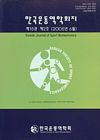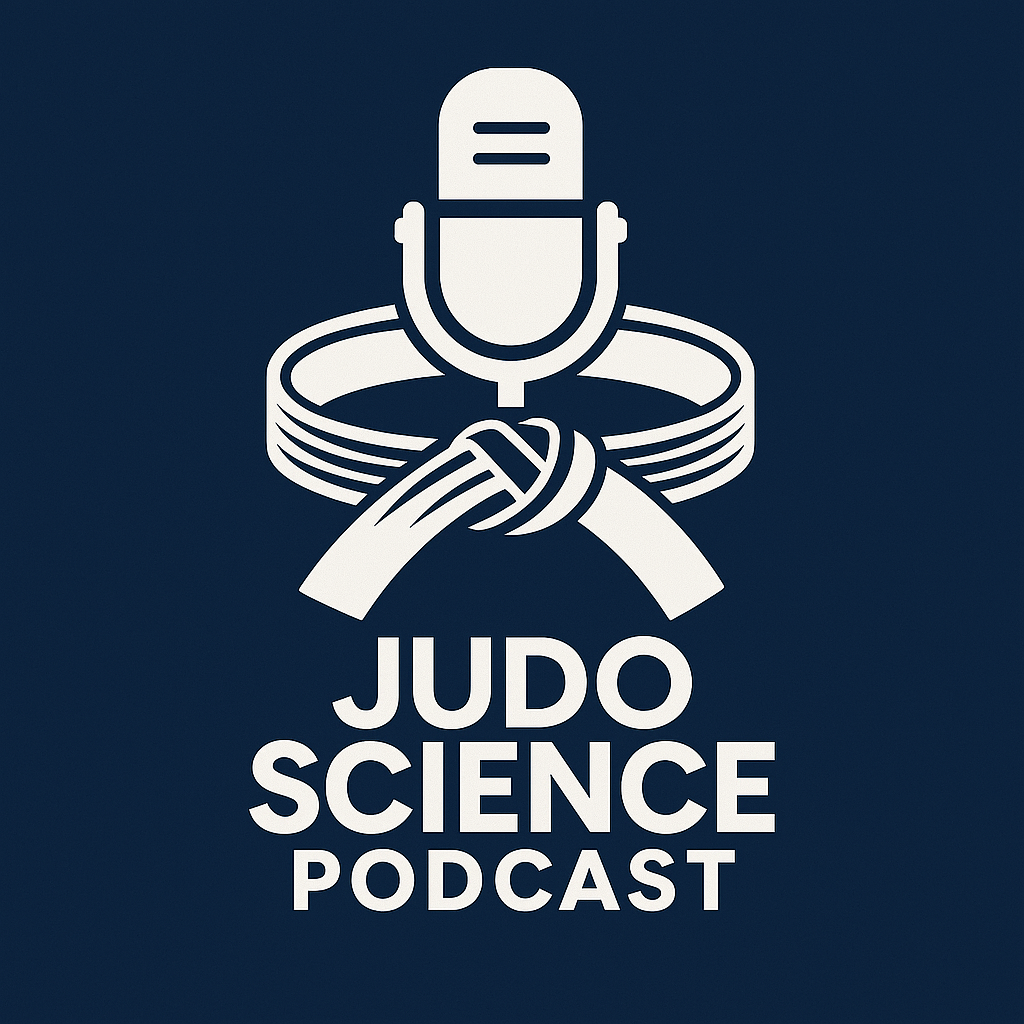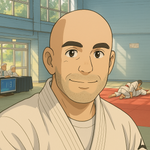Why does your Uchimata feel like a slow spin, while theirs launches like a catapult?
Picture this: you step in for Uchimata, hips aligned, grip firm, leg swinging up—and yet, your opponent shrugs it off. Then you watch a high-level judoka do the same, and their uke flips like a rag doll. What makes the difference? It's not just strength or intent.
It's velocity. It's biomechanics. It's the subtle, lightning-fast mechanics beneath the surface that makes the pros stand out from the rest.
Recent biomechanical studies give us a high-speed camera look into what skilled judokas are doing differently—and how you can close that gap.
In this NotebookLM podcast, we explore the biomechanics of the judo throwing technique called "uchimata," or inner thigh throw. Research compares the execution of uchimata between highly skilled and less skilled judoka, particularly focusing on the preparation phase and identifying key kinematic differences.
⸻
The Posture Problem: When Uke Makes It Easier
Biomechanics confirms what experienced judokas already sense: Uchimata is brutally effective against a natural stance (shizenhon-tai) and stubbornly sluggish against a defensive one (jigohon-tai).
One study found judokas completed Uchimata 0.07 seconds faster when uke stood in shizenhon-tai, with quicker posture breaks to match. Your throw doesn’t just depend on your motion—it hinges on how and when your opponent commits to posture.
Further Reading: Kim, Eui-Hwan & Cho, Dong-Hee & Kwon, Moon-Seok. (2002). A Kinematic Analysis of Uchi-mata(inner thigh reaping throw) by Kumi-kata types in Judo. Korean Journal of Sport Biomechanics. 12. 63-87. 10.5103/KJSB.2002.12.1.063.
Translation? Hunt for those moments when uke stands relaxed. Learn to see—not just react to—shizenhon-tai, and your Uchimata starts landing with authority.

⸻
Grip, Control, Catapult: Varlam Liparteliani and the Setup Game
Former World Champion Neil Adams nails it in his breakdown of Liparteliani’s Uchimata: the throw doesn’t start with the leg—it starts with the lapel hand. The grip isn’t static; it’s active leverage. It sets uke off balance and primes the kinetic chain.
Watch Liparteliani’s fights and you'll see it—subtle pulls, micro-adjustments, posture manipulation—all before the leg even leaves the mat. The throw begins before the throw. Watch Neil Adams break it down.
⸻
Leg Speed Isn't Just Fancy
Elite judokas swing their legs faster. Yes, it’s obvious—until you see the delta.
High-level throwers show dramatically higher angular velocity in the sweeping leg. That translates directly to more momentum transferred to uke’s trunk. It’s not just speed—it’s launch physics. Like a trebuchet winding up, every bit of acceleration adds violence to the arc.

If you're looking to understand these mechanics more deeply, the Uchi Mata Basic Tutorial provides a superb animated breakdown of the essential body movements and timing.

⸻
Arms Matter More Than You Think
Here's what most miss: arm speed isn’t an accessory—it’s a co-pilot. Studies show a correlation of over 0.8 between tori’s arm velocity and uke’s angular momentum. That’s biomechanically massive.
Snap the arms, don’t just pull. Coordinate them with the leg sweep. The trunk rotation in uke doesn’t come from magic—it comes from torque you create with your whole kinetic chain.
Takeaways for the Tatami
- Speed isn't flair; it's function: High-level Uchimata depends on fast leg and arm velocity.
- Opponent posture matters: Look for shizenhon-tai to optimize timing.
- Synchronization is key: Maximum throw efficiency comes from coordinated limb action.
- Biomechanics offers a blueprint: Use data to refine, not just repeat.
Final Thought
Maybe mastering Uchimata isn’t about stacking more drills or adding new techniques—it’s about hacking your movement, sharpening your timing, and learning to hit with the velocity of thought.
Want to feel the poetry behind the physics? For a more personal, almost poetic take on this journey, check out An Uchi Mata Story—a love letter to the elegance and evolution of this iconic throw.

Quiz: What is one key biomechanical reason skilled judokas have more success with Uchimata?
A. They grip harder than their opponents
B. They use more strength in the arms
C. They swing their leg faster and more precisely
D. They rely on longer preparation phases
Answer
Correct Answer: C. They swing their leg faster and more precisely.
Explanation: Skilled judokas demonstrate greater angular velocity in the throwing leg, which generates more momentum and rotation in uke’s trunk, increasing throw effectiveness.
(1) Kim, Eui-Hwan & Cho, Dong-Hee & Kwon, Moon-Seok. (2002). A Kinematic Analysis of Uchi-mata(inner thigh reaping throw) by Kumi-kata types in Judo. Korean Journal of Sport Biomechanics. 12. 63-87. 10.5103/KJSB.2002.12.1.063.
(2) Hamaguchi, Kazuto & Furukawa, Takumi & Takeuchi, Sora & Sasakawa, Yoshiki & Deguchi, Tatsuya. (2024). BIOMECHANICAL ANALYSIS OF JUDOKAS`THROWING TECHNIQUES: FOCUS ON THE PREPARATION PHASE.
(3) Yoon, Hyun. (2005). The Kinetic Analysis of the Lower Extremity Joints when Performing Uchi-mata by Uke`s Posture in Judo. Korean Journal of Sport Biomechanics. 15. 167-183. 10.5103/KJSB.2005.15.2.167.






Member discussion: